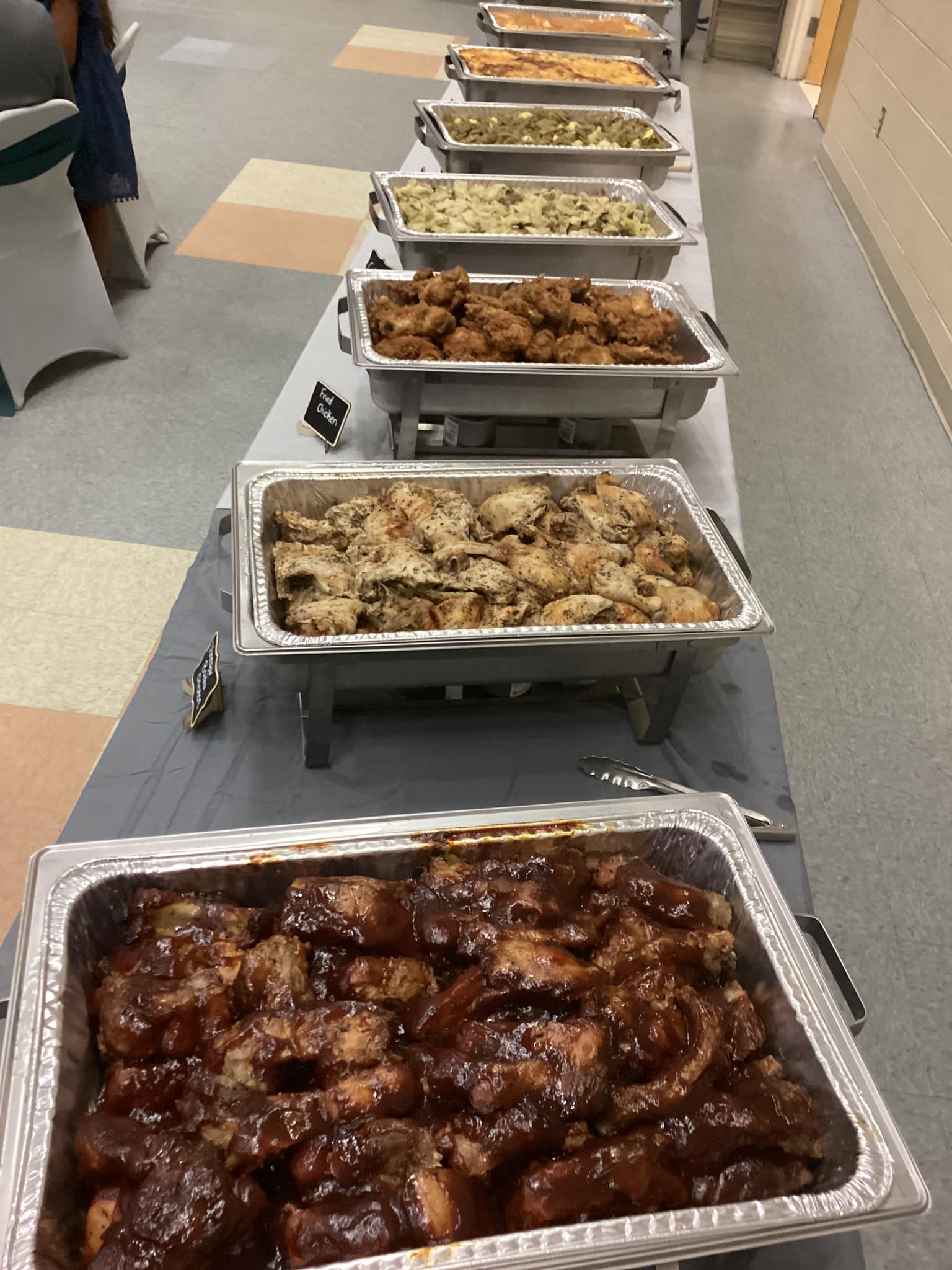Soul food is more than just a culinary tradition; it’s a rich tapestry of history, culture, and community.
Rooted in the experiences of African Americans, this cuisine reflects resilience and creativity, transforming humble ingredients into comforting, flavorful dishes.
This guide explores the origins and influences that shaped soul food, essential ingredients and traditional cooking techniques, and tips on how to modernize these beloved recipes for healthier meals.
Get ready to discover the heart and soul of this iconic cuisine.
- History of Soul Food
- Essential Ingredients in Soul Food Cooking
- Traditional Techniques Used in Soul Food Cooking
- How to Incorporate Healthier Options into Soul Food Cooking
- Frequently Asked Questions
- What is soul food cooking?
- What are some essential ingredients in soul food cooking?
- What are some traditional cooking techniques used in soul food cooking?
- How can I make soul food cooking healthier?
- Are there any vegetarian or vegan options in soul food cooking?
- What are some tips for beginners in soul food cooking?
History of Soul Food
The history of soul food is deeply rooted in the cultural heritage of African Americans, emerging from a blend of traditional West African cooking techniques, culinary influences from Native Americans, and the adaptation of Southern cuisine during the era of slavery.
Soul food evolved as a representation of community, resilience, and creativity, utilizing local ingredients and traditional cooking methods to create comfort food that has become iconic in American culture.
Essential dishes such as collard greens, cornbread, and fried chicken have become emblematic of this rich tradition, showcasing a unique blend of flavors and nutritional value that continues to be celebrated today.
How Did Soul Food Originate?
Soul food originated from the resourcefulness of enslaved Africans who transformed humble ingredients into satisfying meals that nourished both body and spirit, often sharing these meals in communal settings to foster family bonds and cultural connections.
By utilizing locally sourced ingredients like corn, collard greens, and black-eyed peas, these culinary traditions flourished in Southern kitchens, reflecting a deep connection to the land.
Traditional cooking methods, such as slow cooking and frying, enhanced flavors and textures, allowing every ingredient’s essence to shine through.
These techniques were passed down through generations, blending African, Native American, and European influences into a unique cuisine that celebrates community and resilience.
As a result, soul food not only represents sustenance but also serves as a cherished part of Southern culture, deeply intertwined with history and identity.
What Influences Shaped Soul Food?
The influences that shaped soul food encompass a rich tapestry of culinary traditions, ranging from West African cooking techniques to European and Native American ingredients, creating a unique flavor profile that reflects the history and resilience of the communities that embraced it.
This multifaceted cuisine draws upon the heartiness of dishes originally prepared by enslaved Africans, who ingeniously utilized available resources and incorporated local ingredients to create meals that were both nourishing and imbued with cultural significance.
Staples such as collard greens, black-eyed peas, and cornbread feature prominently, showcasing a blend of flavors that evoke a deep sense of belonging.
Regional variations also emerge, with the spicy essence of Louisiana Creole cuisine and the sweetness of Southern comfort foods further enriching this vital culinary heritage.
Underlying all these elements is a profound sense of community, where meals are often shared, symbolizing unity and resilience in the face of adversity.
Essential Ingredients in Soul Food Cooking
The essential ingredients in soul food cooking are crucial for creating its signature flavors and comfort food appeal, featuring staples like:
- collard greens
- cornbread
- beans
- a variety of spices that enhance the overall taste profile of traditional dishes
1. Greens
Collard greens are a quintessential component of soul food, celebrated for their rich flavor and nutritional value, often cooked slowly with spices and seasonings to create a hearty side dish that pairs beautifully with various meats.
These leafy greens, along with mustard and turnip greens, not only enhance the meal’s flavor profile with their earthy and slightly bitter tones, but they also pack a nutritional punch.
Rich in vitamins A, C, and K, as well as calcium and fiber, they contribute to a balanced diet while supporting overall health.
Common cooking methods include simmering them with smoked meats or sautéing them with garlic to intensify their flavor, providing a satisfying experience that warms both the body and soul.
In many households, the preparation becomes a cherished tradition, adding a sense of community and comfort to family gatherings.
2. Cornmeal
Cornmeal is another essential ingredient in soul food, serving as the base for cornbread and other traditional dishes that embody Southern hospitality and comfort, often prepared using methods such as baking and frying.
This versatile ingredient not only enhances the flavor of dishes but also carries deep cultural significance in African American culinary traditions.
From rich, buttery cornbread served warm alongside collard greens to crispy fried catfish coated in a seasoned cornmeal crust, it captures the essence of communal gatherings.
Cornmeal plays a vital role in iconic recipes like hushpuppies and polenta, showcasing how simple ingredients transform into beloved comfort food.
By using various cooking techniques, such as steaming and sautéing, this staple can be adapted to modern tastes while still honoring its historical roots in soul food cuisine.
3. Pork
Pork is a staple protein in soul food, often featured in dishes such as fried pork chops and barbecued ribs, celebrated for its versatility and ability to complement the bold flavors of spices and seasonings commonly used in this cuisine.
This versatility allows for various cooking techniques, from slow-roasting to frying, ensuring that each dish carries its own unique flair.
A family gathering often highlights pork-based recipes such as collard greens flavored with ham hocks or a steaming pot of gumbo that showcases the meat’s rich depth.
The smoky undertones found in barbecued preparations can perfectly harmonize with tangy sauces, while spices like cayenne and garlic elevate the overall flavor profile.
Beyond mere sustenance, these dishes embody cultural heritage, nurturing connections among generations and creating memorable family meals that tell a story of tradition and love.
4. Beans and Peas
Beans, such as black-eyed peas, are essential to soul food cooking, noted for their hearty texture and ability to absorb flavors, making them a perfect complement to various meat dishes and a staple in family meals.
Their role extends beyond mere sustenance; these legumes are celebrated for their nutritional benefits, providing a rich source of protein, fiber, and essential vitamins that contribute to a well-rounded diet.
In the preparation of traditional dishes, families often incorporate fresh or dried beans, emphasizing regional sourcing from local farms to ensure quality and flavor.
Signature recipes, like Hoppin’ John, highlight both the cultural significance and the delicious versatility of these ingredients, showcasing how they foster community and connection around the dinner table while promoting healthy eating habits.
5. Hot Sauce
Hot sauce is a beloved condiment in soul food cuisine, used to add a kick of heat and depth of flavor to dishes, elevating the overall taste experience and reflecting the culinary traditions of Southern cooking.
For many, it’s an essential component that transforms simple recipes into iconic meals. Varieties such as Crystal, Tabasco, and Louisiana hot sauce are popular choices, each bringing its unique profile to classic dishes like fried chicken, collard greens, and gumbo.
The interplay of spices found in these sauces not only enhances flavor but also adds a new layer of complexity that can make even the most basic ingredients sing.
In terms of seasoning, the right amount of heat can create a harmonious balance that tantalizes the taste buds and deepens the enjoyment of soul food’s rich and soulful flavors.
Traditional Techniques Used in Soul Food Cooking
Traditional techniques used in soul food cooking, such as slow cooking, frying, smoking, and braising, are essential for developing the rich flavors and comforting textures that characterize this revered cuisine, deeply rooted in family traditions and cultural significance.
1. Slow Cooking
Slow cooking is a hallmark of soul food, allowing flavors to meld together beautifully over time, resulting in tender meats and hearty stews that exemplify the essence of comfort food.
This method not only elevates the taste but also preserves the rich culinary traditions passed down through generations.
Techniques like braising and stewing are commonly employed in iconic dishes such as gumbo, collard greens, and barbecue ribs, where patience truly pays off. The low-and-slow approach enhances the natural sweetness of vegetables and the smokiness of meats, making each bite a soulful revelation.
Whether it’s a cozy family gathering or a festive celebration, indulging in these lovingly prepared meals nurtures both the body and spirit, uniting loved ones around the table with deep-rooted flavors that tell a story.
2. Frying
Frying is a beloved cooking method in southern food, used to create crispy textures and rich flavors in iconic dishes like fried chicken and catfish, showcasing the culinary artistry of Southern cuisine.
This technique not only enhances the overall palate but also provides an engaging cooking experience that many home chefs cherish.
When utilizing deep frying, the ability to achieve a golden-brown crust while sealing in moisture is unparalleled. On the other hand, pan frying offers a more hands-on approach, allowing for gradual seasoning and control over the cooking process.
Both methods contribute distinctive flavor profiles; deep frying infuses dishes with a delightful, crunchy exterior, while pan frying allows for rich, caramelized surfaces that elevate the taste of various ingredients such as vegetables and meats.
These methods reflect the heart and soul of Southern cooking traditions.
3. Smoking
Smoking is an integral technique in soul food, imparting a unique depth of flavor to meats such as pulled pork and ribs, and connecting the cooking process to regional barbecue traditions.
This method not only enhances the natural taste of the ingredients but also evokes a sense of history and community, as families gather around smoky grills for celebrations.
The slow cooking technique allows flavors from wood sources like hickory or mesquite to mingle beautifully with spices and marinades, creating mouthwatering dishes that form a cornerstone of Southern cuisine.
The cultural significance is palpable, as each region boasts its own signature style and flavor combinations, highlighting the rich tapestry of culinary traditions that define southern food across America.
4. Braising
Braising is a traditional cooking method in soul food that involves slow-cooking meats in liquid, resulting in tender, flavorful dishes that are often served as a centerpiece at family gatherings.
This technique not only enhances the inherent flavors of the ingredients but also allows for an aromatic fusion of spices and herbs that is deeply comforting.
Families often gather around a pot of braised collard greens, with their rich, earthy taste complementing hearty dishes like braised short ribs or chicken, which are staples at many tables.
The low-and-slow process of braising locks in moisture and tenderness, making it perfect for tougher cuts of meat, evolving them into succulent delights that evoke a sense of tradition and togetherness in every bite.
How to Incorporate Healthier Options into Soul Food Cooking
Incorporating healthier options into soul food cooking doesn’t mean sacrificing flavor; instead, it involves making thoughtful choices, such as using leaner cuts of meat and increasing vegetable content to maintain the comforting essence of traditional dishes.
1. Using Leaner Cuts of Meat
Utilizing leaner cuts of meat in soul food recipes can significantly reduce fat content while still delivering the hearty flavors and satisfaction associated with traditional dishes like gumbo and jambalaya.
By opting for options such as skinless chicken, turkey breast, or even cuts of pork loin, cooks can maintain that beloved, rich taste without the added guilt.
These healthier alternatives not only contribute to a more balanced diet but also provide an excellent canvas for spices and marinades that can elevate the meal’s flavor profile.
When preparing dishes, consider using grilling or baking methods instead of frying, and don’t shy away from incorporating vibrant vegetables, which can enhance both the nutrition and presentation of the final plate.
For those looking to experiment, substituting traditional sausage with smoked turkey sausage offers a delightful twist without sacrificing flavor.
2. Substituting Traditional Ingredients with Healthier Alternatives
Substituting traditional ingredients in soul food with healthier alternatives, such as using whole grains instead of refined ones and incorporating more vegetables, can enhance both the nutritional profile and flavor of these beloved recipes.
These modifications not only bring a new level of satisfaction to the meals but also honor the culinary traditions that have been passed down through generations.
For instance, swapping out white rice for quinoa or brown rice provides a nutty flavor and additional fiber, making the dish more filling. Similarly, adding leafy greens like collard or mustard greens can introduce a depth of flavor while boosting the overall health benefits.
Emphasizing the layers of taste achieved through these thoughtful substitutions ensures that every dish remains true to its roots, yet evolves to meet modern dietary preferences.
3. Adding More Vegetables to Dishes
Adding more vegetables to soul food dishes not only boosts nutritional value but also introduces new flavors and textures, allowing for creative recipe variations that stay true to the essence of comfort food.
For instance, incorporating collard greens, sweet potatoes, or black-eyed peas can transform traditional recipes into healthier options, enhancing both taste and health benefits.
By blending sautéed greens into a creamy casserole or adding roasted sweet potatoes to a classic gumbo, one can enjoy the hearty, satisfying essence of soul food while embracing more nutritious ingredients.
This not only appeals to those seeking lighter meals but also opens up new avenues for culinary exploration, celebrating the richness of flavors and the joy of cooking.
Ultimately, embracing these vibrant vegetables can elevate beloved comfort dishes, making them even more delightful and wholesome.
Frequently Asked Questions
What is soul food cooking?
Soul food cooking is a type of cuisine that originated in the Southern United States, particularly among African American communities. It is characterized by the use of affordable and readily available ingredients, such as meats, vegetables, and grains, as well as cooking techniques that have been passed down for generations.
What are some essential ingredients in soul food cooking?
Some essential ingredients in soul food cooking include collard greens, black-eyed peas, cornmeal, and pork products such as smoked ham hocks and bacon. Other common ingredients include chicken, catfish, and sweet potatoes.
What are some traditional cooking techniques used in soul food cooking?
Some traditional cooking techniques used in soul food cooking include braising, frying, and slow cooking. These techniques help to bring out the flavors and textures of the ingredients, creating rich and hearty dishes.
How can I make soul food cooking healthier?
While traditional soul food cooking can be heavy and high in fat, there are ways to make it healthier. For example, you can use leaner cuts of meat, substitute healthier cooking oils and fats, and incorporate more vegetables and whole grains into your dishes.
Are there any vegetarian or vegan options in soul food cooking?
Yes, there are vegetarian and vegan options in soul food cooking. Some traditional dishes, such as collard greens and black-eyed peas, can easily be made without using any animal products. You can also substitute plant-based proteins, such as tofu or tempeh, in dishes that traditionally use meat.
What are some tips for beginners in soul food cooking?
If you are new to soul food cooking, here are a few tips to get started: familiarize yourself with the traditional ingredients and cooking techniques, start with simple recipes and gradually add more complexity, and don’t be afraid to experiment and put your own spin on traditional dishes.






